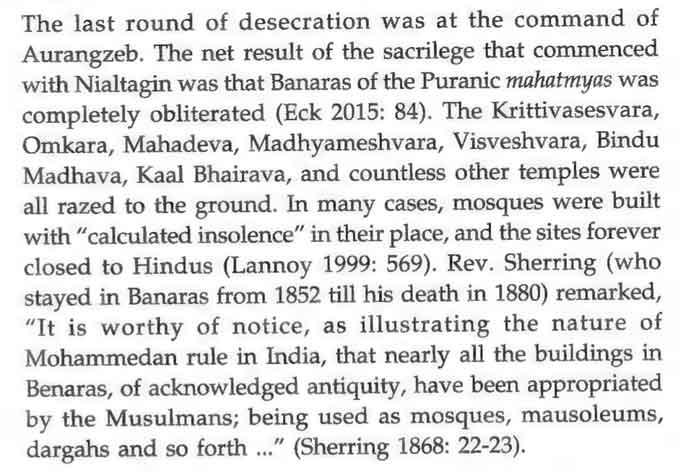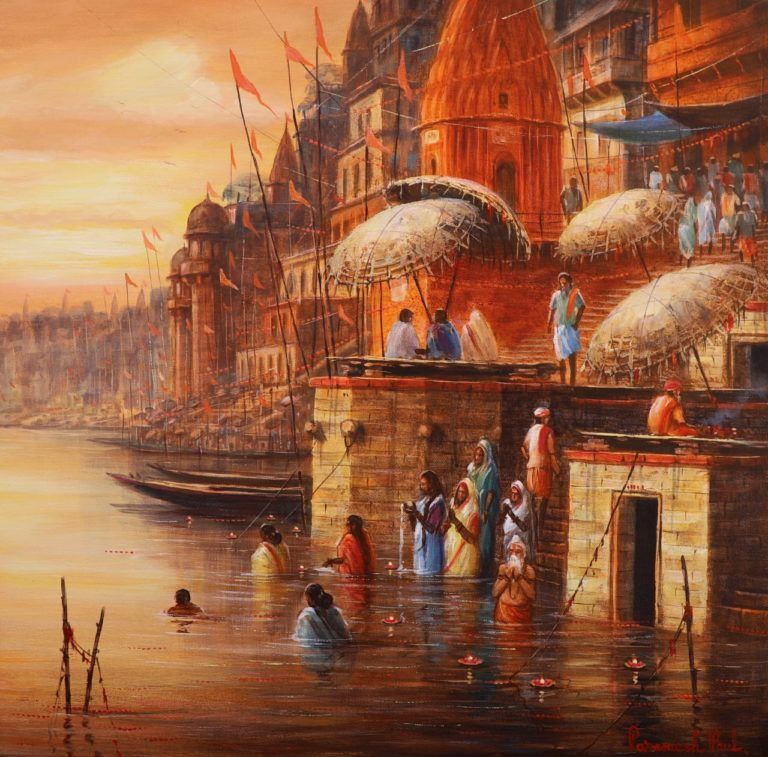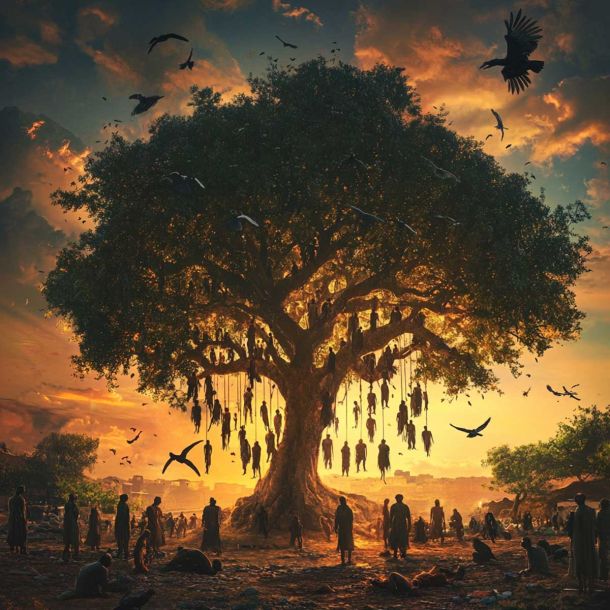MORE COVERAGE
Twitter Coverage
Satyaagrah
Written on
Satyaagrah
Written on
Satyaagrah
Written on
Satyaagrah
Written on
Satyaagrah
Written on
JOIN SATYAAGRAH SOCIAL MEDIA
Kashi symbolizes the unshakeable plasticity and unity of Hindus - presence of Padmesvara stones and Padmesvara inscription in the Lal Darwaza mosque, attests further that Kashi’s Islamic monuments are built on temple remains

The city of Kashi epitomizes the unshakeable resilience and unity of Hindus. Devastated multiple times by Islamic invaders, it rose again every time to be rebuilt and renewed by Hindus from all over Bharat, who ensured its perpetual rebirth and existence.
Hindu temples of Varanasi were devastated so many times, that almost no ancient temple site could escape modification. The 10th c. Kardameshwar temple of Siva, in Kandura village near BHU, is the only temple in its original state dating from the pre-Muslim period.
 |
The Islamic invasions began in In 1033 CE when Varanasi was plundered by Mahmud Ghazni’s son Nialtagin. By end of the 11th c., Chandradeva, established the Gahadavala dynasty by regaining Kashi and built the Adi Keshava shrine with gold, valuables, 1000 cows, and a village.
 |
In 1194 CE, Muhammad Ghori’s commander Kutubuddin Aibak attacked and razed Varanasi to the ground. Hindus were massacred and over 1000 ancient temples were destroyed. So much booty was taken away that it took 1400 camels to carry it.
 |
 |
Hindus recaptured Kashi, so in 1197 CE Kutubuddin attacked again. But he lost control once more by 1212 CE, when Bengal’s Visvarupa Sena erected a Yupa and Vijay Stambh of victory at the center of Varanasi, declaring it the ”Kshetra of Shiva Visveshwara”.
 |
In 1279 CE, the Hoysala king Narasimha 3 donated an entire village to pay the Jizya tax on behalf of Varanasi. The money was funded by residents of Karnataka, Telangana, Talvi (Tulu), Tirhut (Bihar), and Gauda (Bengal) regions. Donations from Gujarat also poured in.
 |
By 1353 CE, 2 grand temples – Padmesvara and Manikarnikesvara were built. In 1376 CE, Firoz Tughlaq demolished the Atala Devi Mandir to build the Atala mosque at Jaunpur. Demolished Hindu temples were used to build mosques at Arhai Kangara, Chaukhambha, Golaghat, and Bakaria Kund.
 |
 |
In 1393 CE, the Shirquis used Stone pillars from the Gupta period temples of Kashi as stools in mosque gardens. The presence of Padmesvara stones and the Padmesvara inscription in the Lal Darwaza mosque, attests further that Kashi’s Islamic monuments are built on temple remains.
 |
In 1496 CE, Varanasi suffered another horrific blow when Sikandar Lodi ordered the complete and utter destruction of all Hindu temples at Varanasi. In an all too familiar story, the rebuilt shrines were once again left in ruins.
 |
 |
The great centers of learning and education that enriched Varanasi with wisdom for ages were destroyed and scholars fled to the South. But just 50 years later, the resilient Hindu scholars from Maharashtra and Karnataka headed a resurrection of Sanskrit learning in Varanasi.
 |
 |
In 1567 CE, Akbar conquered Kashi for the second time and ordered it plundered, followed by a period of relative peace. Rajput kings Man Singh and Raja Todarmal used this opportunity to revitalize Varanasi by reconstructing numerous temples and Ghats during this era.
 |
 |
 |
But in 1669, Varanasi had to face its worst attack ever at the hands of the fanatic Mughal Aurangzeb who went on a rampage destroying temples and built the Gyan Vyapi mosque atop Visveshwara, Dharahara mosque on Bindu Madhava and Alamgiri mosque on top of Krittivasesvara temples.
 |
 |
Aurangzeb tried to erase Varanasi’s existence by renaming it “Muhammadabad” and issued coins in that name. His demolition of Kashi Visheshwara made Shivaji Maharaj’s mother Jijabai so furious that she challenged him to capture Sinhagad – changing the course of history forever.
 |
 |
Only after Aurangzeb’s death could real reconstruction of Varanasi begin. It was thanks to the efforts of many devoted Hindus such as Marathas, Rajputs, Bengalis, and others that Visheshwara (Vishwanath) and other holy shrines of Kashi could rise again to their original glory.
 |
 |
The Kashi Khanda of Skanda Purana described 1099 original Temples and Tirthasthaans in Kashi. Almost none remain in their original state. Yet it is a testimony to Hindu resilience & unity that so many sites were rebuilt & ancient Vigrahas reestablished whenever possible.
 |
 |
The Kashi Khanda enumerates 72 Devi mandirs. Of these, the Bhavani Gauri deity was worshipped until the 16th c. as Annapurna, and Bhuvaneshwari was worshipped in the Annapurna temple. Both were demolished in 1496 by Lodi, and the Bhavani temple lay ruined.
 |
A new temple was built at the site of the Bhuvaneshwari temple, under the name of Annapurna and the new Annapurna deity continued to be worshipped in the way prescribed for Bhavani Gauri. A temple to the goddess was built by the Peshwa Balaji Baji Rao I in 1725.
 |
Just a few days ago, an 18th-century Murti of Maa Annapurna, which was stolen from Varanasi 108 years ago by a Canadian thief and later donated to a museum in Canada, was returned to Bharat, thanks to the central govt.’s initiatives.
 |
Her re-installment with due reverence and ceremony is a surreal validation of the eternal story of Varanasi, which always rose beyond destruction, living in the collective resilience & devotion of Hindus all over the world.
No other shrine represents this spirit of resilience and unity more than Kashi Vishwanath. In the 18th and 19th centuries, Hindus from all over Bharat contributed to rebuilding it as they considered the shrine and Varanasi itself as the crowning metaphor of Hindu faith and culture.
 |
 |
For centuries, the freedom to worship our deities in Kashi, amidst a pure Ganga, clean Ghats resonating with Aarti, resplendent temples alive with the sound of Mantras, organized and beautiful streets lined with the heritage of ancient Kashi was all but an elusive dream.
Hindus never failed to keep the flame of faith burning at Varanasi. The Kashi Vishwanath project has empowered us to celebrate the spirit of Hindu renewal on our terms and realize this dream. Varanasi is not a mere city, but a timeless symbol of Hindu spiritual continuity.
 |
References:
Varanasi Down the Ages – Kuber Nath Sukul
Flight of deities & rebirth of temples – Meenakshi Jain
History of Medieval Hindu India – Vol 3 – C.V. Vaidya
Kashi – The City Illustrious or Benares – Edwin Greaves
The Skanda Purana: Book 4 – G. V. Tagare
This article has been compiled from the tweet thread of @MumukshuSavitri
 Support Us
Support Us
Satyagraha was born from the heart of our land, with an undying aim to unveil the true essence of Bharat. It seeks to illuminate the hidden tales of our valiant freedom fighters and the rich chronicles that haven't yet sung their complete melody in the mainstream.
While platforms like NDTV and 'The Wire' effortlessly garner funds under the banner of safeguarding democracy, we at Satyagraha walk a different path. Our strength and resonance come from you. In this journey to weave a stronger Bharat, every little contribution amplifies our voice. Let's come together, contribute as you can, and champion the true spirit of our nation.
 |  |  |
| ICICI Bank of Satyaagrah | Razorpay Bank of Satyaagrah | PayPal Bank of Satyaagrah - For International Payments |
If all above doesn't work, then try the LINK below:
Please share the article on other platforms
DISCLAIMER: The author is solely responsible for the views expressed in this article. The author carries the responsibility for citing and/or licensing of images utilized within the text. The website also frequently uses non-commercial images for representational purposes only in line with the article. We are not responsible for the authenticity of such images. If some images have a copyright issue, we request the person/entity to contact us at satyaagrahindia@gmail.com and we will take the necessary actions to resolve the issue.
Related Articles
- Hero of Pawankhind: Veer Maratha Bajiprabhu Deshpande, who led 300 Soldiers against 12000 Adilshahi Army defending Shivaji
- An ancient Mata Tripur Sundari temple located in a remote forest area was burnt down in Kulgam: Jammu & Kashmir Police tries to downplay the event saying it was a minor fire caused by 'diyas/arti’
- To be on the wrong side of history is a choice – How 21st-century invaders are capturing Chhatrapati Shivaji’s forts the way even Mughals didn’t and attempting to reclaim an invader identity unapologetically
- Busting the myth of “glories” of the Mughal Empire and its economic superiority as fantasized by Indian Marxist and Liberal historians
- Islamic revivalist movements in Bharat and Deoband’s link to Taliban
- Mohammedan needs to 'take back Babri Masjid', ISIS magazine states that Hindus are ‘filthy urine drinkers’ who learned civilized living from Muslims
- Jihad Recruitment going on in Madrassas forced the Assam government to cease hundreds of them
- NMA received outrage from Netizens for asking ASI to remove Ganesh idols from Qutub Minar complex to National Museum as it will remove the big evidence of Islamist vandalism: Ganesha is the prime god of Hinduism
- How Chhatrapati Shivaji Maharaj was establishing Hindu Samrajya by concluding centuries of Islamic oppression - Historian GB Mehandale destroys secular propaganda against Hindu Samrajya Divas
- The Islamic Doctrine of Permanent War: Jihãd and Religious Riot
- Owaisi bole toh 'Peace', Narsinghanand bole toh 'hate speech': Owaisi played the victim and filed a complaint, leading to an FIR against ‘Dharma Sansad’
- Menace of historical oblivion: Hindus have forgotten about a thousand years of Islamic persecution
- Moplah Genocide of the Malabar Hindus, 1921: Thousands of Hindus slaughtered
- If only India’s partition chilling wound was not enough, Gandhi did his last protest again only to blackmail India into giving 55 crores to Pakistan, dragged Hindu, Sikh refugees seeking shelter in mosques to die in cold: And we call him Mahatma, not for
- Narasimha Anjaneyar temple demolished in Tamil Nadu despite devotees best efforts to save it, places of worship of other religions are spared



























